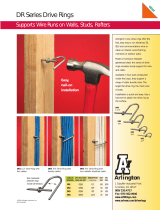
33
33
3
ContentsContents
ContentsContents
Contents
1 Introduction1 Introduction
1 Introduction1 Introduction
1 Introduction
......................................................................................................
......................................................................................................
...................................................
5 5
5 5
5
1.1 Pa ck age Contents .......................................................... 5
1.2 Specifications ................................................................ 6
1.3 Motherboard Layout ...................................................... 8
1.4 ASRock I/O Plus
TM
.......................................................... 9
2 Installation2 Installation
2 Installation2 Installation
2 Installation
............................................................................................................
............................................................................................................
......................................................
10 10
10 10
10
2.1 Screw Holes ................................................................. 10
2.2 Pre-installation Precautions ........................................... 10
2.3 CPU Installation .............................................................. 11
2.4 Installation of CPU Fan and Heatsink ............................ 11
2.5 Installation of Memory Modules (DIMM) ......................... 12
2.6 Expa nsion Slots (PCI a nd A G P Slots) ........................... 13
2.7 Jumpers Setup .............................................................. 14
2.8 Connectors .................................................................... 16
2.9 Seri al A TA (SATA) Hard Disks In stallation /
RAID Configurations ...................................................... 19
2.10 Installing Windows 2000 / XP With RAID Functions ..... 20
2.1 1 In stalling W indows 2000 / XP W ithout RAID Function s. 21
2.12 In stalling W indows 98 SE / ME on SATA H D D ............... 21
3 BIOS S3 BIOS S
3 BIOS S3 BIOS S
3 BIOS S
ETUP UTILITYETUP UTILITY
ETUP UTILITYETUP UTILITY
ETUP UTILITY
......................................................................................
......................................................................................
...........................................
22 22
22 22
22
3.1 Introduction .................................................................... 22
3.1.1 BIOS Menu Bar .................................................... 22
3.1.2 Navigation Keys ................................................... 23
3.2 Main Screen ................................................................... 23
3.3 Advanced Screen ......................................................... 23
3.3.1 CPU Configuration ................................................. 24
3.3.2 Chipset Configuration .......................................... 25
3.3.3 ACPI Configuration ............................................... 27
3.3.4 IDE Configuration ................................................. 28
3.3.5 PCIPnP Configuration ........................................... 30
3.3.6 Floppy Configuration ........................................... 30
3.3.7 Super IO Configuration ........................................ 31
3.3.8 USB Configuration ............................................... 32
3.4 Hardware Health Event Monitoring Screen .................. 33
3.5 Boot Screen ................................................................... 33
3.5.1 Boot Setting Configuration .................................... 34
3.6 Security Screen ............................................................ 34
3.7 Exit Screen .................................................................... 35





















